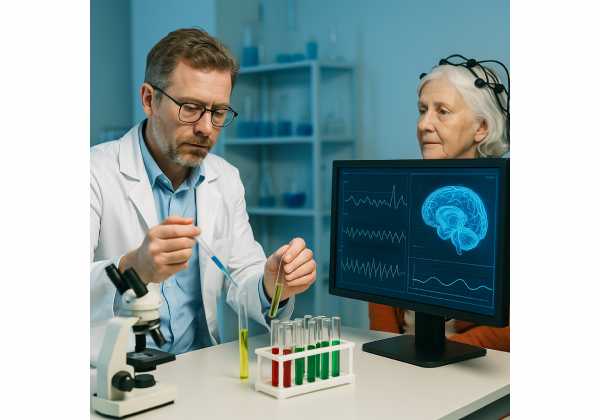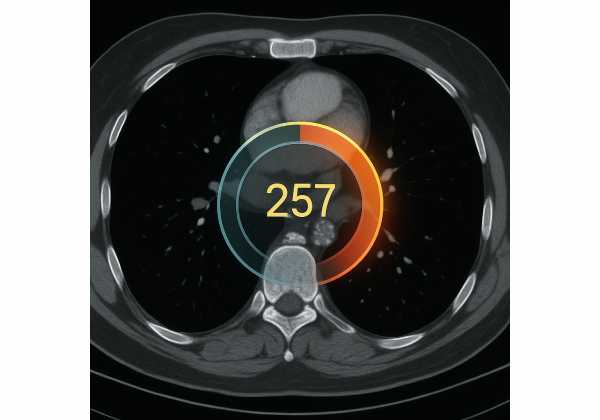Purpose, Meaning, and Brain Longevity: The Protective Power of Why
A clear sense of purpose is not a luxury; it is practical brain care. People who can explain why they get up in the morning tend to move more, connect more, and learn more—habits that strengthen cognitive networks and buffer stress. Purpose is not the same as achievement or status. It is the felt direction that aligns your time...
Small Vessel Disease and White Matter: What Midlife Adults Should Know
Small vessel disease (SVD) is common, under-recognized, and important in midlife. It describes damage to the brain’s tiny arteries and capillaries that gradually affects white matter—the wiring that helps different regions communicate. You may never notice a single dramatic event. Instead, changes often appear as slower processing, subtle gait shifts, and more effort to multitask. The good news: everyday...
Traumatic Brain Injury Prevention in Midlife and Beyond: Falls, Sports, and Safety
Staying active in your 40s, 50s, 60s, and beyond pays off, but it also brings a different risk profile for head injury. Midlife adults juggle work, caregiving, medications, and weekend sports; older adults face changes in balance, vision, and reaction time. Together these factors can raise the odds of a concussion or more serious traumatic brain injury (TBI). The...
Vestibular Health and Brain Longevity: Dizziness, Balance, and Navigation
Feeling steady is easy to take for granted—until a head turn, a busy store aisle, or a moving car makes the room spin. Your vestibular system, anchored in the inner ear and integrated with vision and body-sense, keeps you upright, oriented, and confident. When it misfires, even simple tasks feel uncertain. The good news: most vestibular problems improve with...
Vision, Contrast, and Brain Aging: Lighting, Lenses, and Safety
Aging eyes do more than blur fine print. As contrast fades and glare rises, the brain must work harder to decode scenes, track faces, and stay steady on uneven ground. That extra load affects attention, memory, and confidence—especially at night, in busy stores, or when weather and lighting change. The good news: small, specific adjustments restore visual clarity and...
A1c, Fasting Glucose, and Fasting Insulin: Testing for Healthy Aging
A single number rarely tells the whole story of metabolic health. For healthy aging, three simple labs—A1c, fasting glucose, and fasting insulin—capture complementary signals: long-term glycemia, baseline glucose regulation, and the insulin “effort” required to keep glucose in range. Read together and trended over time, they reveal patterns that affect energy, cardiometabolic risk, and healthspan. This guide explains why...
Ambulatory and Nighttime BP: When 24 Hour Monitoring Matters
Ambulatory blood pressure monitoring (ABPM) shows what your blood pressure does during real life—at work, at dinner, and while you sleep. For many people, clinic readings miss the full story. ABPM can uncover white-coat hypertension, masked hypertension, and night-time elevations that drive long-term risk. It also helps you and your clinician tailor treatment so numbers are steady across the...
B12, Folate, and Homocysteine: Brain and Metabolic Clues
Vitamins B12 and folate power the enzymes that keep nerves wired, blood cells healthy, and DNA methylation on track. When they slip, the earliest signals are often biochemical—subtle shifts in homocysteine or methylmalonic acid—long before anemia or neuropathy appear. This article translates those labs into practical decisions: what to order, how to prepare, what the patterns mean, and when...
Body Composition and Muscle: DEXA vs BIA vs Tape
A body composition test is more than a curiosity about body fat. It is a decision tool for nutrition, training, and long-term health. The best method for you balances accuracy, consistency, and practicality. Dual-energy X-ray absorptiometry (DEXA), bioelectrical impedance analysis (BIA), and tape-based anthropometrics each capture different aspects of fat, lean mass, and distribution. Used well, they complement each...
Bone Density for Longevity: DEXA Scans Explained
Healthy bones are central to healthy aging. A single wrist or hip fracture can trim years off independence, slow recovery from other illness, and restrict the activities that keep you fit. Dual-energy X-ray absorptiometry (DEXA or DXA) is the standard test to measure bone mineral density (BMD) and estimate fracture risk. Yet scan printouts can be confusing: T-scores, Z-scores,...
Continuous Glucose Monitoring for Longevity: Setup, Accuracy, and Use Cases
Modern continuous glucose monitoring (CGM) lets you see how meals, exercise, sleep, and stress affect your glucose in real time—without constant finger-sticks. For people focused on healthy aging, CGM can highlight patterns that traditional labs miss, like late-evening surges or post-workout dips. This guide explains how CGMs work, what “good enough” accuracy looks like, when to trust the number...
Coronary Artery Calcium for Longevity: Score, Risk, and Follow-Up
A coronary artery calcium (CAC) scan is a five-minute, noninvasive CT that quantifies calcified plaque in your coronary arteries. For people focused on healthspan, it offers something most lab panels cannot: a direct read on atherosclerotic burden today and how that burden maps to future cardiovascular risk. Used thoughtfully, CAC can sharpen decisions about lifestyle intensity, lipid-lowering therapy, and...
Functional Longevity Tests: Grip, Gait Speed, and Sit to Stand
Measuring strength and mobility with quick field tests can tell you more about real-world aging than many lab values. Grip strength, usual-pace gait speed, and the 30-second sit-to-stand capture the capacity you use every day to open jars, cross streets, and stand from a chair. They are inexpensive, repeatable, and responsive to training. In about ten minutes, you can...
Genetics in Longevity: APOE, Pharmacogenomics, and What’s Actionable
Genetic information can sharpen longevity planning, but only when it is handled with care. Most genes nudge risk rather than dictate outcomes. A few guide prescribing decisions or point to family conditions that benefit from earlier screening and treatment. This article explains what to do—and what not to do—with two common use cases: APOE for Alzheimer risk context and...
Home Blood Pressure for Longevity: Proper Measurement and Targets
Home blood pressure tracking is one of the simplest ways to protect your brain, heart, and kidneys across decades. Done well, it turns a vague risk into concrete numbers you can act on. Done poorly, it misleads and delays treatment. This guide focuses on what actually matters for long-term health: choosing a validated cuff that fits your arm, using...
Inflammation Markers for Healthy Aging: hs-CRP and Beyond
Aging well is not only about cholesterol and blood pressure. Low-grade, chronic inflammation shapes cardiovascular risk, metabolic health, and how resilient you feel day to day. The high-sensitivity C-reactive protein (hs-CRP) blood test is a practical window into that biology. It is inexpensive, widely available, and responsive to lifestyle change. Used thoughtfully—alongside history, examination, and other labs—it helps you...




















